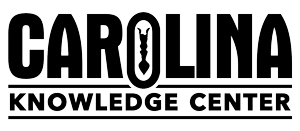In theory, elementary educators may agree with that statement from the National Science Teaching Association (NSTA). But in practice, science often takes a back seat to high-stakes literacy and math classes in which teachers feel pressure to meet accountability goals (Hall 2011). The urgency to focus more on building proficiency in literacy intensified when the 2022 National Assessment of Education Progress revealed a decline in the average reading score for grades 4 and 8 since 2019 (NCES 2022).
This competition for valuable educational time combined with many educators’ uneasiness in teaching science (National Science Foundation 2014) can lead to science being overlooked in the day-to-day elementary classroom. However, three-dimensional science and literacy have a symbiotic relationship, providing an opportunity for meaningful learning that engages students in the world around them while cultivating reading, writing, and vocabulary skills.
“There must be adequate time in every school day to engage elementary students in high-quality science instruction that actively involves them in the processes of science.”
National Science Teaching Association Tweet
One way to incorporate science instruction in the elementary classroom while still focusing on literacy goals is to identify common learning objectives that exist across the curricula, Maria Garrido Rojo says. Garrido Rojo, now a curriculum product developer for Carolina Biological Supply Company, is equipped with strategies and expertise gained from teaching in elementary classrooms in Chapel Hill, North Carolina; Alexandria, Virginia; and Charleston, South Carolina. “I question why in elementary school we have learning compartmentalized when these skills are all interrelated in our lives,” she explains. “If you’re doing hands-on science using a high-quality curriculum, you’re engaging students in literacy and math skills too.”
A 2018 national survey revealed that grades K–3 teachers spent an average of 18 minutes per week on science; for grades 4–6, the average was 27 minutes per week (Horizon Research Inc. 2018). In contrast, the NSTA recommends that schools strive for at least 60 minutes of daily science instruction (NSTA, n.d.).
The Language Lessons in Science
Literacy skills are recognized as key in science education. In A Framework for K–12 Science Education—the framework on which the Next Generation Science Standards* and similar three-dimensional state standards are based—the National Research Council (NRC) lists literacy among the eight practices considered essential for K–12 science and engineering education (NRC 2012, 42).
In Practice 8, Obtaining, Evaluating, and Communicating Information, the Framework explains, “Being literate in science and engineering requires the ability to read and understand their literature. … Reading, interpreting, and producing text are fundamental practices of science in particular, and they constitute at least half of engineers’ and scientists’ total working time” (NRC 2012, 74).
In science, students read and write as they:
- Ask questions and define problems
- Make predictions
- Plan investigations
- Record observations
- Construct explanations and design solutions
- Engage in scientific argumentation
- Communicate information and ideas
“Any education in science and engineering needs to develop students’ ability to read and produce domain-specific text,” the Framework states. “As such, every science or engineering lesson is in part a language lesson, particularly reading and producing the genres of texts that are intrinsic to science and engineering” (NRC 2012, 76).
Grounding Skills in Rich Content
“For Garrido Rojo, an ideal curriculum is one that begins with science as the base and thoughtfully builds in literacy. “Start with your big idea or question,” she says. “What do you want the kids to learn? What do you want the kids to be able to do? Then work backward from that. For literacy, what are my literacy standards? How can I mesh that with my science standards? What books can I use to support that idea? How does this all work together?”
Using the science big idea or question to engage students and then integrating it within other coursework throughout the school day makes learning more meaningful. “Students realize, ‘Oh, I need to know how to write because I need to inform others of the animals that I just learned about’ or ‘I need to learn to read because I need to know more about these animals I’m really interested in,’” Garrido Rojo explains. “It provides more context for the world, and that is a richer conversation because you’re pulling from all your subjects and making deep connections.”
In addition to grade-level readings in students’ individual book boxes, Garrido Rojo suggests maintaining a classroom science library with fiction and nonfiction texts of various reading levels—“big books” related to science concepts the class is investigating. If discussing pushes and pulls, for example, fiction may relate to the playground; nonfiction options can include encyclopedias and educational books aligned to standards from a science curriculum that builds in literacy components.

Building Blocks of Science® 3D units include nonfiction readers that support ELA standards in reading, writing, and vocabulary development.
“But even when the books they choose are not at their reading level, they’re immersing themselves in books and they’re finding words that they do know, engaging with text features, and using skills to decode other words,” Garrido Rojo explains.
Students’ writing also can be based on the science unit they’re working on, supported by a curriculum that incorporates opinion, how-to, descriptive, and informational writing tasks. “The more we integrate the subjects, the more relevant they become for the students,” Garrido Rojo says. “In my classes, we wrote books even at the kindergarten level with a lot of scaffolding and sentence stems. We used words the students needed to know. The writing was a very important part of tying science into the literacy block.”
A science word wall provides an opportunity to add rigor to vocabulary and serves as a reference for students for independent reading and writing. “The kids learn to recognize those words because they use them all the time. We would pull the words into literacy and again, begin to build that bridge,” she says. “All of a sudden, students can read words like structure and properties in second grade because they’re connected to what they’re learning. They’re finding these words on their word wall, and they’re finding them in their readings.”

Building Blocks of Science® 3D Earned Word Cards help students build their vocabulary. Students earn words by being able to use the word to explain the world around them.

Rebuilding Engagement
While learning remotely during the COVID-19 pandemic, student motivation and morale dropped. In the 2020–21 school year, 50 percent of students reported feeling less motivated in class and having lower morale. Teachers estimated that it was closer to 88 percent of students being less motivated and having lower morale (EdWeek Research Center 2021). With the return to in-person learning, the questioning nature of three-dimensional, hands-on science capitalizes on students’ innate curiosity to draw them in and boost engagement as they collaborate to make sense of phenomena.
“At the elementary level, students are not meant to sit and listen to you. They have to be doing,” Garrido Rojo says. “When you have a big science idea that you’re working on, the students know what they’re going for and tend to be more independent. They look for books that will help them learn. They write things that will help them learn. Science is your real-world tie-in. It’s relevant; it’s not just for school. It’s ‘I’m learning about my world.’ That’s where we have the most buy-in.”

When students embrace learning, it extends beyond the classroom. As a teacher, Garrido Rojo received consistent feedback from parents about their children applying science skills they learned in school to home activities. That inspired and motivated her. “Because it was more meaningful for them, it was also more meaningful and authentic for me as a teacher,” she says. “Then I was teaching them because they wanted to learn, because I wanted to teach them. It becomes a cycle: because they were so engaged, I wanted to help engage them more so they become even more engaged. This cycle can only be achieved when what they’re learning and what I’m teaching is relevant to them.”
Garrido Rojo understands how daunting it can feel to find time to teach science every school day. “But you have to give it a try,” she urges. “Once you do, you’ll notice everything gets better. By far, science was the best time for my students for classroom management, for their behavior, for their engagement, for their learning. We bring science into literacy, it goes back to science. We bring literacy into science, it goes back to literacy. They feed off each other, which makes it easier to be focused as a teacher and easier for a student to be focused on what they’re learning.”
A Case Study: Using Science to Learn Literacy
“A literacy crisis.” That’s how 26-year veteran teacher Mekel Bromley describes what her school and others are facing. In the past, about 50 percent of her grade 4 students were reading below grade level; now, upon returning to the classroom after learning remotely, it’s 85 percent. In the past, her upper elementary students used to read to learn. Now they need to learn to read.
As part of the Hemet Unified School District in Hemet, California, Bromley’s students must achieve essential language arts standards. One way she boosts reading, writing, and vocabulary skills—a way that motivates students to learn and prepares them for high-level nonfiction readings on state tests—is through three-dimensional, hands-on science.
High-quality science curricula assimilate literacy into hands-on science learning. Bromley uses the Building Blocks of Science® 3D program to accomplish goals at two key points in her school day: to teach English language arts (ELA) in the morning and to teach hands-on science in the afternoon.
“The literacy articles are usually grade level or higher,” she says of the science units, but her students’ reading abilities range from kindergarten to grade 5. In the morning, as part of ELA time, the class chorally reads the literacy article from the science unit. They annotate the article, numbering the paragraphs for reference, and circling Tier 2 and Tier 3 vocabulary. They work to define words through context clues. They use morphology, breaking the words into prefixes, suffixes, and root words. If it’s a scientific word, they circle it, define it, and annotate the definition in the margin. When they see that word again when doing an investigation, Bromley refers them back to the literacy article.

Bromley says her students are expected to learn six to eight new vocabulary words a day to be proficient. “Science evens the playing field,” she says, referring to her students’ varied reading abilities and of the high population of English language learners in her class. “Sedimentary rock and igneous rock, those are words no one is familiar with, and so a fantastic way to teach vocabulary is to actually use scientific articles and nonfiction.”
When Bromley pulls students to work in small groups, other students use the science program’s digital science readers and simulations as part of their “must do” and “may do” independent learning times. “Building Blocks of Science has a fantastic science reader,” she says. “If they [students] can’t read the science reader, they can use text to speech—they can listen to it, they can highlight words they don’t know to listen to them again, and they write down what they think is the most important thing. It makes it more equitable for all.”
Some students, Bromley says, question why they need to read scientific text, say the text is too hard, skip words, or guess. “But if I say, ‘Hey, we’re doing this to get you prepared for a really fun hands-on activity in the afternoon,’ it’s kind of like that carrot—they’re going to work harder than they usually would because they know it’s going to help them with a hands-on investigation,” Bromley says. “I find it’s highly engaging, even with my behavior problems. I’ve had great success with that. If you have students who are well behaved, you can teach a lot more.”
To answer the questions, Bromley starts students off with a sentence frame. Students write answers working in groups and then discuss the answers as a class. As part of the discussion, Bromley reminds students of foundational writing skills: Does the sentence start with a capital letter? Is there period? “I even have them write the main idea of a literacy article and then give a short summary,” she says.
After completing their hands-on investigation in the afternoon, students reread the literacy article. Bromley tells them, “‘I want you to go back to your article and see if you can read some of that on your own. Now I want you to look over it again and pick out a couple interesting facts.’ Maybe they pick out only the sentences they can actually read, but that’s also telling and a great informal assessment for me. Then I tell them to write down the three most interesting facts. Okay, so now I’ve already got a writing assignment. How quick was that?”
“And so again,” she reiterates. “It really comes down to engagement. It’s almost like we have to trick them to learn and realize that learning is fun. But they have to do the work. They have to have some grit. Science is a great avenue to do that.”

REFERENCES
EdWeek Research Center. 2021. “Data Snapshot: What Teacher and Student Morale Looks Like Right Now.” January 6, 2021. https://www.edweek.org/leadership/data-snapshot-what-teacher-and-student-morale-looks-like-right-now/2021/01.
Hall, Lawrence. 2011. “Teachers Have Little Time to Teach Science, Study Shows.” Berkeley Research: October 25, 2011. https://vcresearch.berkeley.edu/news/teachers-have-little-time-teach-science-study-shows.
Horizon Research Inc. 2018. “National Survey of Science & Mathematics Education.” Accessed January 2023. http://horizon-research.com/NSSME/2018-nssme/research-products/reports/technical-report.
National Center for Educational Statistics. 2022. “Scores Decline in NAEP Reading at Grades 4 and 8 Compared to 2019.” Accessed January 2023. https://www.nationsreportcard.gov/highlights/reading/2022/.
National Research Council. 2012. A Framework for K–12 Science Education: Practices, Crosscutting Concepts, and Core Ideas. Washington, DC. The National Academies Press. https://doi.org/10.17226/13165.
National Science Teaching Association. n.d. “Position Statement: Elementary School Science.” Accessed January 2023. https://www.nsta.org/nstas-offi cial-positions/elementary-school-science.
LEARN MORE
Learn how literacy is a key component of phenomena-based science curricula, supporting reading, writing, and vocabulary skills as it integrates all dimensions of three-dimensional science teaching and learning at Carolina.com/curriculum
curriculum@carolina.com
800.334.5551
CAROLINA
Carolina Biological Supply Company is a leading supplier of science teaching materials. Headquartered in Burlington, North Carolina, it serves customers worldwide, including teachers, professors, homeschool educators, and professionals in health- and science-related fields. Carolina is the exclusive developer and distributor of the Building Blocks of Science® 3D curriculum and the new BBS3D@Home digital component.




